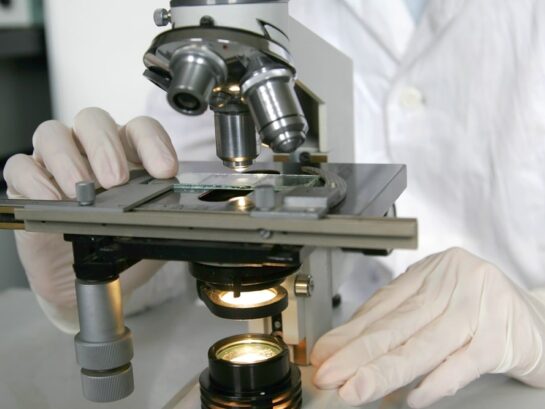Precision cleaning is a critical part of your production process. You need your products clean to the microscopic level.
How do you know they're clean enough? With cleanliness verification and validation.
As cleanliness standards become tighter, testing for cleanliness becomes more and more important. Pharmaceutical cleaning validation alone will be worth almost $22.3 billion by 2028.
Learn more about cleaning verification and its importance for your cleaning and testing process.
What Is Cleanliness Verification and Validation?
Cleanliness verification and validation are procedures for documenting that cleaning processes prevent contamination. Cleaning validation establishes well-documented and verifiable evidence.
Cleaning verification demonstrates Current Good Manufacturing Practices (CGMP) for pharmaceuticals. CGMP is a legal requirement for the U.S. pharmaceutical industry. Many international markets require it as well.
Two methods for cleanliness verification and validation are:
- Measuring particulate contamination
- Measuring nonvolatile residue (NVR)
These methods have applications in a variety of industries.
Why Is Cleaning Validation Important?
Cleaning validation is a critical part of your manufacturing process. It helps ensure the safety, efficacy, and quality of the finished product. Depending on your industry, cleanliness verification and validation may be a legal requirement.
Cleaning verification helps you stay competitive no matter which industry you're in. Your clients demand the highest quality products. Validating your cleaning processes gives clients more confidence in your production methods.
Standards for Cleanliness Verification and Validation
ISO and ASTM Standards
The International Organization for Standardization (ISO) publishes international standards for cleaning validation. The American Society for Testing and Materials (ASTM) is another important standards organization.
ISO standards cover a wide range of cleaning processes and industries. For example, ISO 14952 addresses the cleaning verification processes for spacecraft.
ASTM standards cover cleaning verification processes and the materials used for testing. For example, ASTM D1193 is a standard for reagent water used in some types of testing.
Measuring Particulate Contamination for Cleanliness Verification and Validation
A particulate contamination test looks for unintended mobile and undissolved particles. Particulate contamination can be solid or liquid. Contaminants can come from sources such as:
- The air
- Process fluids
- Personnel working in the cleanroom
- Operation of process equipment
Testing for particulate contamination can help you improve your production processes. You can identify possible sources of contamination.
Direct vs Indirect Evaluation
A direct method of analysis involves examining the surfaces directly using microscopy. This method avoids sampling losses.
It only detects particles with enough contrast to stand out from the surface, though. Direct analysis isn't practical for components with complex geometries.
An indirect method of analysis detaches the particles from the surface. Detachment techniques include:
- A liquid or gas medium
- Stripping
- Tape lift
The analyst then transfers the particles onto a membrane filter. Filtering the extraction liquid is a common way to transfer the particles.
Indirect analysis lets you examine the entire component. It's effective even if the part has complex geometries. However, particle losses can occur during extraction.
Very clean working conditions are necessary to avoid cross-contamination.
Verification Using ASTM F312
ASTM F312 is one standard for performing a particulate contamination test. The standard covers how to count the particles and determine their size distribution.
Light-optical analysis is a common method for measuring and counting particles. It uses a microscope. The analyst systematically examines the entire effective filtering area of the sample.
The analyst scans and counts particles in each size range. A tally counter keeps track of the number of particles in each range.
Measuring Nonvolatile Residue for Cleanliness Verification and Validation
Nonvolatile residue is soluble, suspended, or particulate material. It remains on the surface after the volatile solvent that contained it evaporates. In addition to verifying cleanliness, measuring NVR can show the purity of a solvent.
Verification Using ASTM F331
ASTM F331 provides a standard test method for NVR. First, the analyst extracts particulates from the component. This process is the same as for a particulate contamination test.
Then, the analyst removes the insoluble particles. A particle count analysis following ASTM F312 is possible at this point.
Next, a flash evaporator evaporates the solvent. The evaporation stages call for caution. Evaporating organic solvents can pose a safety risk.
After evaporating the solvent, the analyst measures the residue gravimetrically. Gravimetric analysis determines the amount of a substance based on measurements of mass. ASTM E1235 is a common reference standard for determining NVR gravimetrically.
Weighing NVR is a differential weighing application. The amount of NVR is usually very small.
Measuring it requires an extremely accurate balance. The readability requirement is often to five or six decimal places.
Finding the Right Cleaning Verification Partner
Cleanliness verification and validation is critical for your operations. It helps you follow legal requirements. It helps you stay competitive.
Testing for cleanliness is only as good as the firm doing the testing. Precision Fabricating & Cleaning has been serving our customers since 1964. Our facilities are ISO 9001/AS9100 registered. Our cleanrooms are ISO 14644 compliant.
We're committed to giving you the highest quality cleaning and verification services. Contact PFC today to discuss your cleanliness testing needs.

